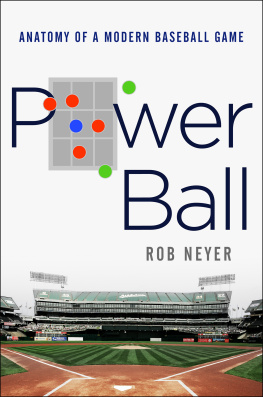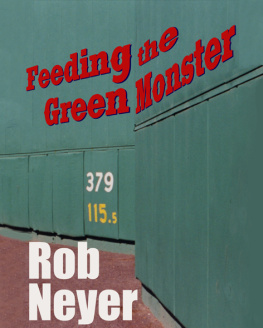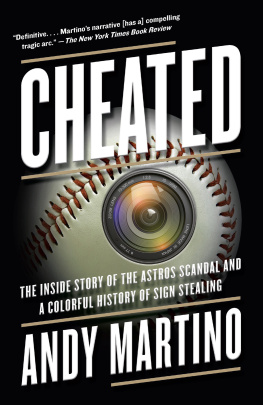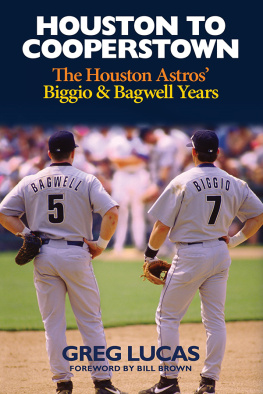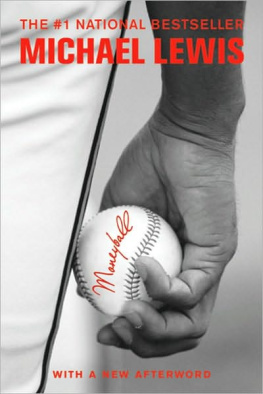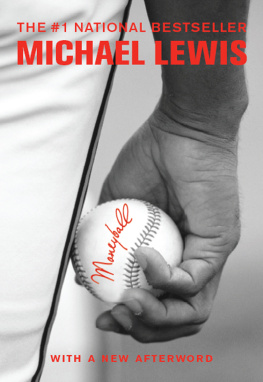Contents
This book is for A, and O.
The strongest thing baseball has going for it today is its yesterdays.
Lawrence Ritter (19222004)
Ninety feet.
Sixty feet six inches.
Those numbersthe distance between the bases; the distance from the pitchers rubber to the foot of home platehave remained the same since 1893. You remember 1893, right? When a mustachioed fella named Grover was president?
No, you dont remember. The two dimensions that matter the most in baseball have been the same for way longer than you can remember. Or your grandparents can remember.
Its still ninety feet, and its still sixty feet six inches, and you still gotta hit a round ball with a round bat and thats still really hard to do. Which is why were able to compare Babe Ruth to Aaron Judge. Mickey Mantle to Mike Trout.
This is a wonderful gift for baseball fans. I just watched Game 7 of the 1960 World Series, and there was very little that didnt seem perfectly modern. Aside from a player they called the Little Round Man, anyway. When my wifes uncle Bruce tells me stories about seeing Jackie Robinson playing for the Dodgers in Brooklyn, its not like trying to imagine Gettysburg or the Pony Express. I can relate to a baseball game sixty-some years ago at Ebbets Field. Theyve now been playing baseball at Fenway Park and Wrigley Field for more than a century, and a time-traveling baseball fan from 1917 would not need long at all to perfectly understand a game in 2017.
But even as the dimensions and the necessary skills and a few of the ballparks have remained largely the same for so many decades, virtually everything else is radically, dramatically, tremendously different than it was.
Most of the changes have been gradual, so we hardly noticed them as they were happening. But were lucky enough to get the occasional literary snapshot.
Way back in the Dead Ball Era, more than a century ago, National League stars Johnny Evers and Christy Mathewson wroteokay, had written for themfairly sophisticated, revealing books about the game as it was then played in the major leagues. Alas, there really wasnt anything comparable published for some years. Not that there werent any books published about the game on the field in those next few decades; its just that none of them are today considered essential for ones understanding of the times.
For that sort of book, we must jump all the way to Game 1 of the 1954 World Series, when the wonderfully perceptive Arnold Hano sat in the center-field bleachers, just like any other fan, in Manhattans Polo Grounds, and wrote an entire book about that single game. Hanos A Day in the Bleachers would be the first of a specific genre, and stands today as the single most vivid description of Willie Mayss nearly infinite talents.
In 1985, we were blessed with Dan Okrents Nine Innings. Three years earlier, Okrent witnessed a Brewers-Orioles game in Milwaukee, and over the course of many months he reported the hell out of that single game. The book was worth the wait.
Five years later, George Wills megabestselling Men at Work: The Craft of Baseball came out. Wills book focused largely on Tony Gwynn (especially his hitting), Cal Ripken (fielding), Orel Hershiser (pitching) and Tony La Russa (managing). Will was mostly interested in how those supremely successful professionals went about their business. Their craft.
Thirteen years later, Michael Lewiss Moneyball: The Art of Winning an Unfair Game became a mega-megabestseller; to this day, you can hardly walk into an airport bookstore without tripping over a pile of Moneyball paperbacks.
While Will focused on his four principals, and Lewis on Billy Beane and his Island of Misfit Toys, both books also serve as revealing windows into what baseball then was like. Wills primary interest was in how the players did their work, Lewiss on how management did their work, and Okrent seems to have been interested in everything. Ill cop to all of the above, while leaning toward management and taking a great deal of interest in those managing the managers: the people who run Major League Baseball, and the people who run the union.
Speaking of whom, you will see a form here youve maybe never seen before: not baseball, which after all is just a game. Rather, Baseball with a big B.
Major League Baseball is a proxy for the teams and the league office, now headed by Commissioner Rob Manfred. But MLBs powers, while considerable, are hardly unilateral or unlimited. For roughly fifty years, the Major League Baseball Players Associationthat is, the unionhas been fighting like hell not just for larger salaries, but also for a wealth of other benefits and work rules, to the point where today almost everything is subject to negotiation.
Baseball (with the big B) is who determines and enforces (however loosely) the written and unwritten rules involving beanballs and machismo and bat flipping and all the other things that occasionally get the players so worked up. Baseball (with the big B) is who comes up with the new rules about rosters, and pushes the pitchers complete game toward extinction, and ensures that every player has plenty of space on the airplane and a hotel suite all for himself during road trips.
This book is not about baseball then. Its about baseball now.
This book is full of the stuff you might have missed. Its full of the stuff thats changed since Arnold Hano and Dan Okrent and George Will and Michael Lewis wrote about the modern gamethat is, wrote about their modern game. Which is to say, the game since free agency in the 1970s changed everything, and then again since the early 90s, when vast disparities in local television revenues changed everything again.
Inspired by Hanos ADay in the Bleachers and Okrents Nine Innings, were going to explore todays Baseball through the lens of a single game: Athletics vs. Astros in Oakland. September 8, 2017.
In many ways, this was a meaningless game. If you remember who won the World Series seven weeks later, you might think this was an important game on the way to that victory. It was not. The Astros would be in the playoffs and the As would not. This game was not going to change that (although there was a slight chance that the results would affect the Astros seeding in October, which can seem terribly important in the moment).
It does matter that these were two emblematic franchises: the As of modern baseball, the Astros of (if you will) Postmodern Baseball. And it matters that much of the happenings in this particular game exemplify the sport as it was played, at the absolute highest level on the planet, in 2017.
It also mattered to the players on the field. Every game matters to the players, because most of them are intensely competitive and all of them are being evaluated by their employers, every inning of every game. And this game mattered to the fans who paid good money to see it. Even while knowing their team wont be playing in October, they still root like hell for that jolt of elation that comes with the last out of a victory.
For practically every person in the stadium that night, the game mattered.
I hope it matters for you too. Because just about anything could happen, even in just one game. Because Joaqun Andjars single favorite word to describe baseball is nearly as true now as it was in 1985, when he said it: youneverknow.
The art of hitting is the art of getting your pitch to hit.
Dr. Bobby Brown (b. 1924)
This baseball game seems just about over. The crowd in the stands has been sparse throughout this practically meaningless September contest; with the home team losing in the bottom of the ninth inning, there seems little reason to hang around.

